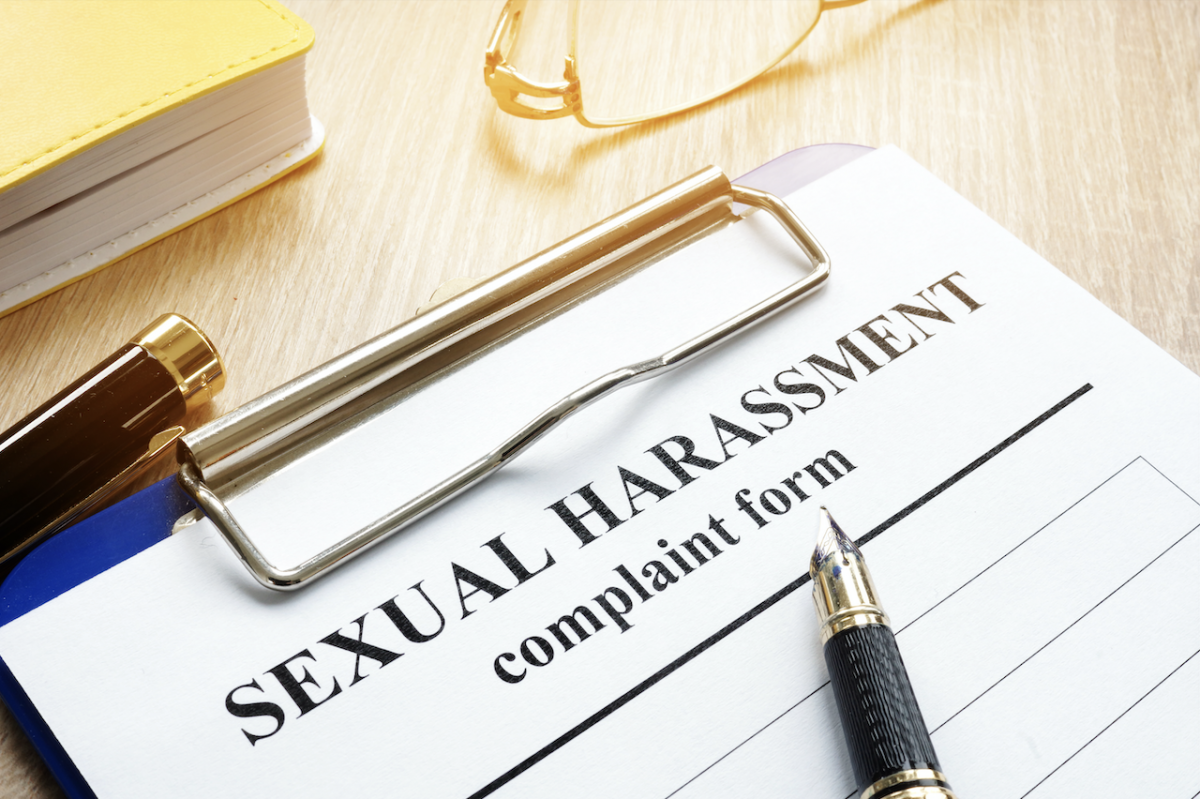
More Thoughts on NCN Litigation and Nationwide Injunctions
05.05.2025 | Linda J. Rosenthal, JD

Last year, we told you about an incident of sexual harassment in the office of a New York philanthropist. It was notable because of the bold action by the young fundraiser for Hillel International. She returned to her organization’s headquarters, marched right into her supervisor’s office, and reported the misconduct. He reassured her that Hillel would not put up with that kind of behavior and that she would never have to meet with that mega donor again even though it meant losing a potentially huge source of financial support.
In Harassment of Fundraisers: A New Report (June 8, 2018), we discussed a survey of development professionals that confirmed the pervasiveness of this problem of sexual misconduct and undue pressure by wealthy and powerful donors. For too long, it has been swept under the rug by charitable organizations. Many fundraisers have left the field entirely out of frustration.
There have been updates to the story about the Hillel fundraiser that have culminated in a blockbuster article in the New York Times on March 21, 2019: naming the billionaire donor and detailing his two-decades-long trail of outrageous and unacceptable behavior.
In the #MeToo era, it was just a matter of time before this almost open secret in philanthropy was exposed and condemned.
Michael Steinhardt, now 78 years old, was a boy from the rough-and-tumble Bensonhurst neighborhood in New York who, through brains and talent, went on to amass billions in the hedge fund field. He has become a philanthropic superstar, donating enormous amounts to major New York institutions like the Metropolitan Museum of Art, where there is a gallery named for him. He is also “among an elite cadre of donors who bankroll some of the country’s most prestigious Jewish nonprofits.” Through his foundations, he has contributed “at least $127 million to charitable causes” since 2003.
In a letter issued by his foundation, responding to the New York Times allegations, there was Steinhardt’s own statement announcing the apparent “shtick” defense: “As I have said before, I deeply regret cavalierly making comments in professional settings that were boorish, disrespectful and just plain dumb. They were part of my shtick since before I had a penny to my name, and I unequivocally meant them in jest….”
It’s a remarkable response, apparently written without any assistance by PR or crisis-response professionals: A perfect example of what not to say in the face of credible allegations of sexual harassment. Of course, nothing beats reading the parts of the NYT piece relating to the specifics of incidents involving at least seven Jewish professional women. After years of silence and fear of professional repercussions from speaking up about a man who had given so much money to so many important causes, they finally decided to speak.
One of them is that Hillel fundraiser, Sheila Katz, now a vice-president of that organization, who provided cringe-inducing details of her encounter with Steinhardt not previously reported. Hillel is an organization that establishes Jewish student centers on university campuses. Ms. Katz went to Steinhardt’s Fifth Avenue office to “interview him for a video Hillel had commissioned about Jewish entrepreneurs.” The philanthropist had contributed to Hillel before, and she hoped she could get renewed support from him for this project. “…As the filming got underway, he repeatedly asked if she would have sex with the ‘king of Israel,’ which he had told her was his preferred title for the video. He then directly asked her to have sex with him….” When she said no, he “brought in two male employees and offered a million dollars if she were to marry one of them.” At the end of the film viewing, Steinhardt “told her it was an ‘abomination’ that a woman who looked like her was not married and said he would not fund her projects until she returned with a husband and child.”
There was a similarly bizarre incident decades ago involving a 27-year-old rabbi during her initial rabbinical assignment that had been funded partly by Steinhardt foundation money. “At her first meeting with him in his office, he ‘harangued her about being unmarried’ and said she should put her womb ‘to work’ and suggested she become his concubine.” Since that time, New York Rabbi Rachel Sabath Beit-Halachmi, now age 50, has avoided him completely.
Then there was Deborah Mohile Goldberg who was an employee of Birthright Israel, a nonprofit co-founded by Steinhardt that funds educational trips to Israel for young Jewish Americans. She reported that “he asked her if she and a female colleague would like to join him in a threesome.” And in yet another outrageous incident, Natalie Goldfein, who was an officer at another small charity that Steinhardt had helped create, “said he suggested in a meeting that they have babies together.”
For “…more than two decades,” Michael Steinhardt’s “generosity has come at a price.” There have been rumors and stories about verbal sexual harassment and improprieties. But women had stayed silent. Colleagues made lame excuses; he was just “joking” around. “You know, that’s just how he is.”
And, increasingly, he became too big to touch – until now.
“We will leave you to read the article describing his behavior,” wrote Ruth McCambridge, editor-in-chief of The Nonprofit Quarterly, on the day this news story broke, “but we have been waiting for this #MeToo shoe to drop for some time.”
A few days later, also in The Nonprofit Quarterly, Martin Levine wrote: “Ethical choices regarding gifts have always been hard, but in the current dynamic of declining numbers of smaller donors, consciousness about the costs of over-dependence on large grants has been brought into greater focus—the kind of focus that requires from all of us an active strategic point of view.” He cited this Steinhardt story as well as the rapidly unfolding saga about major nonprofits finally getting around to returning gifts or cutting off future funding from the Sackler family (implicated in the opioid crisis), though refusing this philanthropic largesse is fiscally painful.
The rise of the mega donor and the shrinking base of medium and small donors means that another consequence of growing wealth inequality is that these billionaires have an increasing and unfortunate level of power over the philanthropic world.
Mr. Levine references an article published in The Washington Post on March 22, 2019, the day after the Times’s blockbuster: Michael Steinhardt and the takeover of Jewish philanthropy by mega-donors. Written by Temple University history professor Lila Corwin Berman, the subtitle aptly explains the premise of this interesting and important piece: “How a shift from communal charity to private foundations empowered individual wealthy funders.”
As this important story continues to unfold, we note that on April 8, 2019, BoardSource published: Addressing Donor Misconduct: Advice to Boards and Leaders. We’ll cover these points in a later post.
